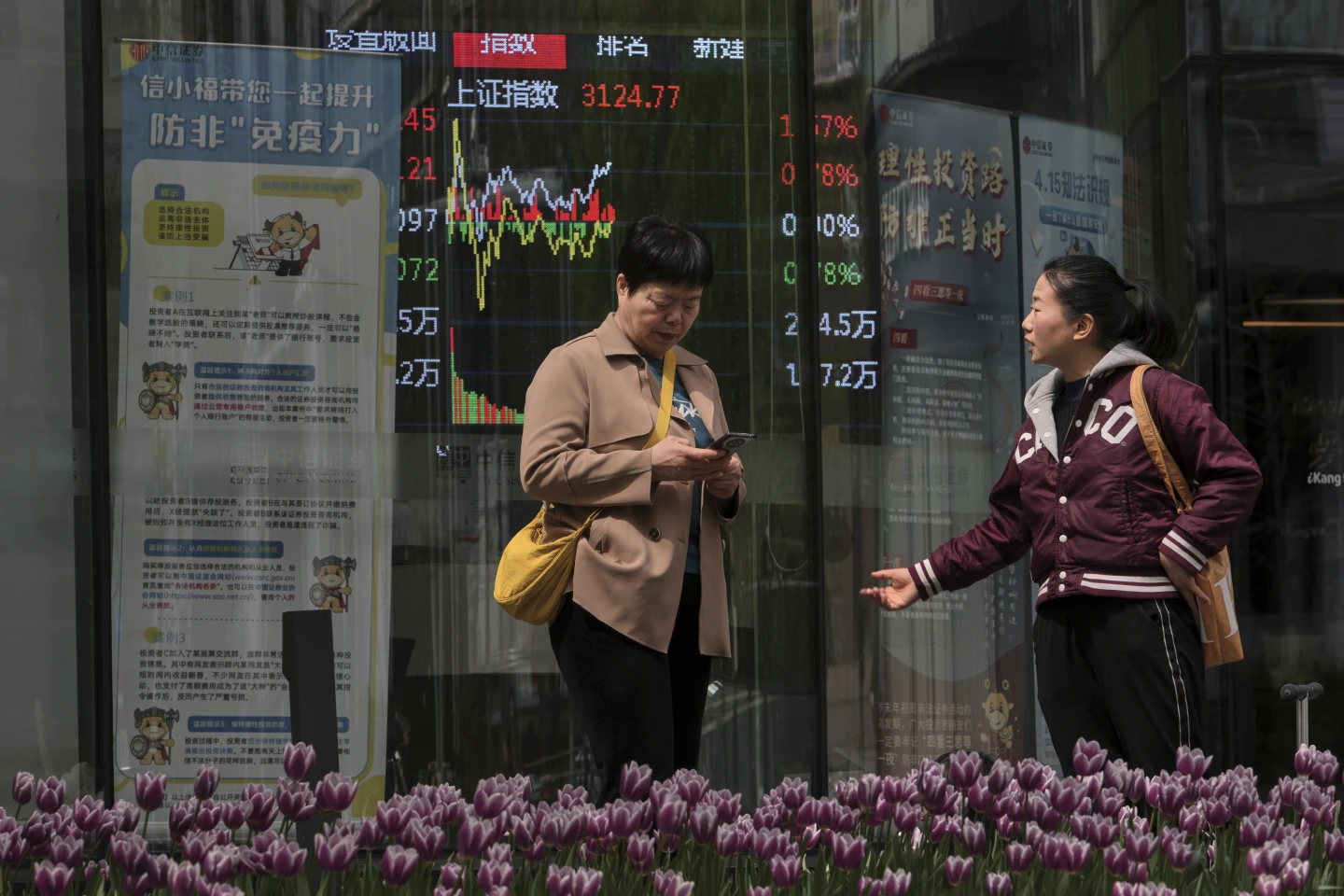BANGKOK (AP) — China’s exports jumped 12.4 per cent in March from a year earlier in a last-minute flurry of activity as companies rushed to beat increases in US tariffs imposed by US President Donald Trump, and analysts forecast sharp setbacks ahead.
Imports fell 4.3 per cent to USD211.3 billion in March, the customs administration reported, far exceeded by exports worth USD313.9 billion, leaving a trade surplus of USD102.6 billion.
China’s trade surplus surged to a record USD992.2 billion in 2024 and its exports climbed 5.4 per cent, helping to make up for sluggish growth at home as the country slowly recovers from a crisis in its property market and lingering impacts of the COVID-19 pandemic.
After taking office, Trump first ordered a 10 per cent increase in tariffs on imports from China. He later raised that to 20 per cent. Now, China is facing 145 per cent tariffs on most of its exports to the United States, based on the most recent revisions in Trump’s trade policies. China has responded with 125 per cent tariffs on US products and other measures meant to pinch the US where it hurts most, such as controls on exports of critical minerals needed in high-tech manufacturing like electric vehicle production.
China’s trade surplus with the United States was USD27.6 billion in March as its exports rose 4.5 per cent. It logged a surplus of USD76.6 billion with the US in January-March even though exports were up only 2.3 per cent the first two months of the year.
“Savvy U.S. importers likely saw tariff hikes coming in April onward and frontloaded imports,” ING Economics said in a report, but that trend is likely to fall off as importers use up their inventories while they watch for the latest twists and turns in unpredictable US trade policy.
“As a result, it’s likely that direct trade between the U.S. and China will crater starting in April,” it said.
The customs data showed total exports from the world’s second largest economy rose 5.8 per cent in the first three months of the year from a year earlier while imports sank 7 per cent, leaving a trade surplus of USD273 billion.

Late Friday, Trump exempted most computer-related goods from the higher China-specific tariffs, including laptops, smartphones and the components needed to make them, though his administration says he plans to announce those within days. Such products accounted for nearly USD174 billion in US imports from China last year.
Still, the harsh US tariffs on Chinese products have raised questions about whether exporters might end up diverting their goods to other overseas markets as they give up on selling to American consumers due to the more than doubling of import duties.
The biggest increases in exports in March were to China’s Southeast Asian neighbours, which saw the dollar value of shipments from China jump 8 per cent in March from a year earlier. Exports to Africa rose more than 11 per cent and those to India by nearly 14 per cent.
A customs administration spokesperson, Lyu Daliang, said China was facing a “complex and severe external situation” but that the sky would not fall. He pointed to China’s diversified export options and huge domestic market.
When asked about falling Chinese imports, he told reporters in Beijing that China has been the world’s second largest importer for 16 straight years, increasing its share of global imports from about 8 per cent to 10.5 per cent.
Chinese President Xi Jinping was visiting Vietnam on Monday as part of a regional tour that also will take him to Malaysia and Cambodia, giving him an opportunity to firm up trade ties with other Asian countries that also are facing potentially steep tariffs, though last week Trump delayed enforcing them by 90 days.
Trade data already show some impact from the higher tariffs, with exports of lower value-added items like shoes and clothing falling, while shipments of computer chips, household appliances and vehicles surged.
China’s exports of rare earths fell nearly 11 per cent in the first quarter of the year as Beijing tightened controls on the strategically vital materials used in electric vehicles and other high-tech products.


